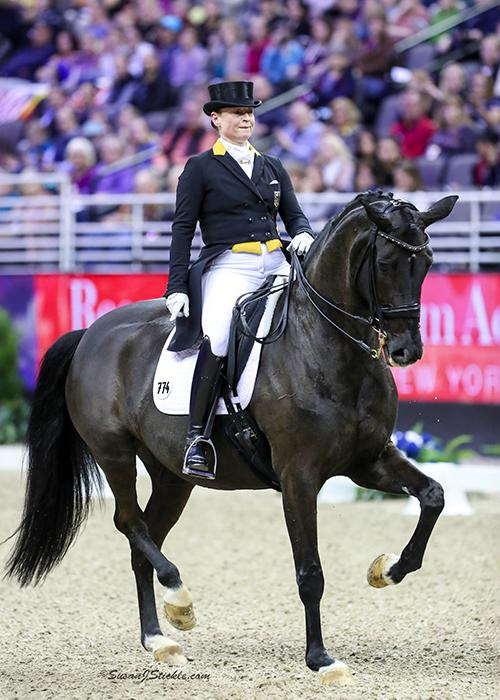The Equestrian World Cup was held this past weekend in Omaha. The winner was Isabel Werth of Germany and her mare Weihegold. She is also the number one ranked rider in the world at this point in time. In second place was American rider Laura Graves and her horse Verdades. In third Britain’s Carl Hester and Nip Tuck.
Of particular interest to me was a video posted on You Tube shows the piaffe and passage , in slow motion ,of these top three riders. Since I just posted recently about my lesson ,on a friends horse, working on the piaffe and passage this video caught my eye. But before you look at the video here are the FEI (International Equestrian Federation) objects and principles of the passage and piaffe.
Article E 1.16 FEI Article 414 THE PASSAGE
- The passage is a measured, very collected, elevated and cadenced trot. It is characterized by a pronounced engagement of the hindquarters, a more accentuated flexion of the knees and hocks and the graceful elasticity of the movement. Each diagonal pair of legs is raised and returned to the ground alternately, with cadence and a prolonged suspension.
- In principle, the height of the toe of the raised forefoot should be level with the middle of the cannon bone of the other supporting foreleg. The toe of the raised hind foot should be slightly above the fetlock joint of the other supporting hind leg.
- The neck should be raised and gracefully arched with the poll as the highest point and the nose line close to the vertical. The horse should remain light and soft “on the bit” without apparent effort and without altering the cadence. The impulsion remains lively and pronounced.
- Irregular steps with the hind or front legs, swinging the forehand , or of the hindquarters from one side to the other, as well as jerky movements of the forelegs or hind legs, dragging the hind legs or double beat in the moment of suspension are serious faults. The aim of passage is to demonstrate the highest degree of collection cadence and suspension in the trot.
Article E 1.17 FEI ATICLE 415 THE PIAFFE
- Piaffe is a highly collected, cadenced, elevated diagonal movement giving the impression of remaining in place. The horse’s back is supple and elastic. The hindquarters are lowered, the haunches with active hocks are well engaged, giving great freedom, lightness and mobility to the shoulders and forehand. Each diagonal pair of legs is raised and returned to the ground alternately, with spring and an even cadence.
It goes on to describe the relative height of the legs and toes and how the neck should be graceful and that the horse’s body should move in a “supple , cadenced and harmonious movement”. It must always be “animated”. And…. “while giving the impression of remaining in place, there may be a visible inclination to advance being displayed by the horse’s eager acceptance to move forward as soon as it is asked.”
Finally ” the aim of the piaffe is to demonstrate the highest degree of collection while giving the impression of remaining in place.”
There you have it. Those are the FEI requirements for the passage and for the piaffe. As it happens all three of these horses demonstrate a very high degree of excellence in the movements. The first horse and rider are Isabel and Weihegold and then Carl Hester and Nip Tuck and third Laura Graves and Verdades. The video shows the passage to piaffe and back to passage from the final center line of the Grand Prix test. Unfortunately the video does not show Carl Hester’s piaffe as it starts after he had finished the piaffe and is on to the passage.
Take a look!
Well? What do you think? Who is your favourite? Let me know and leave me a comment below.
Photo of Isabell Werth (C) Susan J. Stickle

Leave a Reply